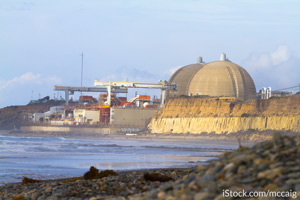
Elisabeth Gerber on the dangers of extrinsic motivation
Organizations around the world hope to prove that natural resource conservation and economic development can go hand in hand—that we can preserve our forests, fish, and waterways while creating pathways out of poverty for our most vulnerable citizens. To do this, institutions often combine educational campaigns with material benefits for communities in the conservation region. But some researchers are concerned that financial motivations will displace environmental ones.
In a quasi-experimental study of a massive eco-development initiative in the Indian Himalaya, Elisabeth Gerber and co-authors (Arun Agrawal and Ashwini Chhatre) found that individuals who received personal rewards for pro-environmental behaviors (job training and agricultural supplies, for example) were more likely to abandon previously held environmental motivations in favor of economic ones. Communal rewards, however—including community infrastructure upgrades and commonly held forest plantations—had no such effect.

Barry Rabe on the best mitigating circumstances
Between 2001 and 2008, 23 U.S. states adopted cap-and-trade policies in an effort to mitigate climate change. But within five years, more than half of these states had abandoned their initiatives. Barry Rabe has long wondered why some of these cap-and-trade systems endured while others failed. In Governance: An International Journal of Policy, Administration, and Institutions, Rabe explores the traits shared by the most resilient cap-and- trade policies. The key ingredients? Broad-based political support, flexibility to adapt to changing circumstances, and sensible revenue-sharing.
» Read "The durability of carbon cap-and-trade policy" in Governance.
Kaitlin Raimi on the backfiring "behavioral wedge"
In the absence of large-scale action on climate change, many have pushed for a "behavioral wedge," in which individuals are nudged to reduce emissions at the household level by reusing and recycling, switching to LED lights, installing programmable thermostats, and more. "Although the concept of the behavioral wedge is intuitively appealing," writes Kaitlin Raimi (with coauthors), "some have suggested that individual behavior change campaigns can actually backfire and lead to less support for [pro- environmental] policy."

The team conducted an experiment with 283 U.S. university students who were randomly assigned to one of three groups. One group was asked to recycle a water bottle, one group was asked to throw it in the trash, and another group was the control. Following this scenario, students completed surveys assessing environmental identity, guilt, anxiety, and levels of support for a pro-environmental campus green fund. Interestingly, only the Democrats showed the feared backfire effects. Democrats who recycled the water bottle (a small, pro-environmental behavior) were less supportive of the campus green fund (a larger policy solution) than those in the control group.
Catherine Hausman on the surprising merits of nuclear
In the U.S., about 20 percent of electricity has historically been provided by nuclear power plants. Once highly profitable, these nuclear facilities are aging, facing stricter safety regulations, and confronting increasing operation and maintenance costs. Several large nuclear facilities have closed in recent years, and others are expected to follow. To understand the economic and social impact of such closures, Catherine Hausman and co-author Lucas Davis examined the abrupt 2012 closure of the San Onofre Nuclear Generating Station (SONGS), which once supplied 8 percent of California’s electricity market.

While immediate savings were a wash—the operation and maintenance costs saved by closing SONGS were roughly equal to the increased costs of electricity in the wake of the closure—the long-term environmental costs were greater. Virtually all of the electricity lost by the SONGS closure was replaced with natural gas, which increased carbon dioxide emissions by 9 million metric tons in the first year alone. "Current policies aimed at reducing carbon emissions tend to focus on wind, solar, and other renewables," write the authors, "but keeping existing nuclear plants open longer could means hundreds of millions of tons of carbon abatement."
Read more about these "faculty findings," and many others, at http://fordschool.umich.edu/faculty-publications.
Below is a formatted version of this article from State & Hill, the magazine of the Ford School. View the entire Fall 2016 State & Hill here.